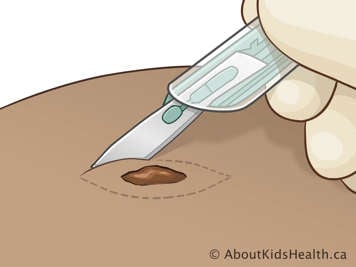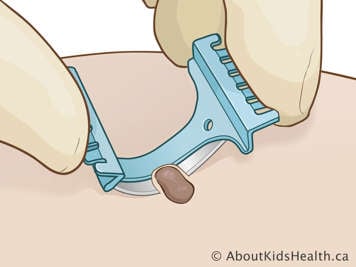What happens right after the biopsy?
The health-care provider may decide to close the biopsy site with stitches and will cover the skin with a bandage. If your child does not need any stitches, the health-care provider will make sure the bleeding stops before putting the bandage on.
Stitches
Stitches control bleeding and can make a scar appear more like a healed line than a healed circle. Whether your child will need stitches depends on several factors, including the type of biopsy they have.
- In shave biopsies and very small punch and excision biopsies, the health-care provider might decide not to use stitches. This will leave a small circular scar.
- For larger biopsies, the health-care provider will likely close the area, usually with non-dissolvable stitches. This means that the stitches will need to be removed after several days. Your doctor will give you instructions about removing the stitches. Stitched biopsy sites will also form scars.
Bandage
All biopsy sites will be covered with a bandage, even if no stitches are needed.
- If the area is not bleeding, the health-care provider will apply ointment and a bandage to the skin.
- If the area is bleeding, the health-care provider may apply medication to help stop the blood flow or will apply pressure to the area until bleeding stops. They will then apply a bandage.
You will be told how to care for your child’s biopsy wound at home.
What to expect after a biopsy
Most of the time, skin biopsies heal very well without any problems. However, since the procedure involves cutting into the skin, there can sometimes be related complications such as bleeding or infection. A small scar will also develop at the site of the biopsy.


